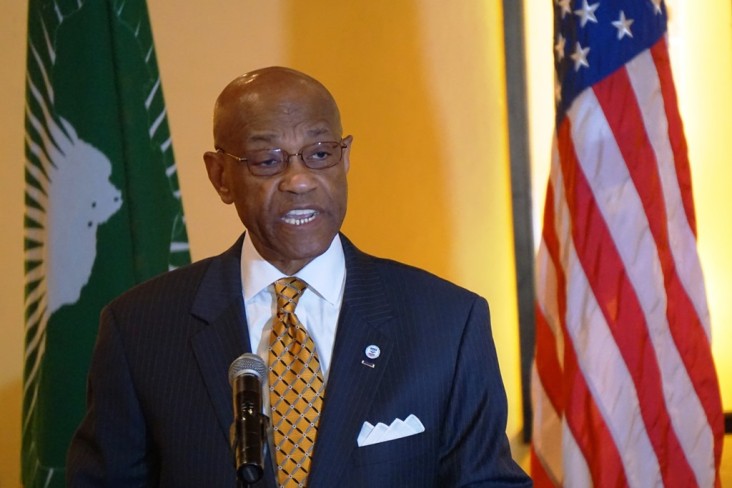
[As Prepared]
Thank you, Deputy Chairperson Mwencha. The United States shares the African Union’s strong commitment to agricultural development and global food security, and we are proud to stand with you as partners in this important work.
That is because we know what supporting agriculture and nutrition can do for a country and its people. Growth in the agricultural sector is at least twice as effective at reducing poverty as growth in other sectors.
So, when President Obama called on leaders around the world to end global hunger and poverty, he emphasized agriculture as the best path to reach that goal. This is the idea behind the program—Feed the Future. Inspired by the African Union’s work through CAADP, Feed the Future promotes country-owned approaches and supports new opportunities and technologies for small-holder farmers.
The program grew out of the president’s $3.5 billion commitment to strengthen global food security through agricultural development. And, as partners around the world joined us with their own commitments, that number turned into more than $22 billion.
That momentum has continued. Just last month, President Obama and Brazil’s President Rousseff announced how our nations will work together to end hunger and malnutrition. Partnerships like this will be critical to achieving our sustainable development goals.
Under Feed the Future, we have implemented programs in 19 countries in Africa, Asia and Latin America, to help them capitalize on the potential of agriculture to drive economic growth. The results speak for themselves.
In 2013 alone, we improved nutrition for over 12 million children. As a result, we have seen a drastic reduction in child stunting and malnutrition.
By arming them with tools and technologies such as high yielding seeds, we helped seven million farmers raise their incomes and begin their journey out of extreme poverty. And, we have supported dozens of countries to make the critical reforms necessary for progress – such as creating an environment conducive to private sector growth.
So, we have seen remarkable success. But now is not the time to be complacent. Today, 795 million people still suffer from hunger all over the world. And, by 2050, the world’s population is projected to increase to more than nine billion. Feeding this number of people will require a 60 percent increase in agricultural production.
On top of that, climate change is already putting our global food supply at risk, and threats from impacts like severe drought and extreme weather are expected to increase in the coming years.
These are enormous challenges. And, the hard truth is there will never be enough Official Development Assistance (ODA) to solve problems of such magnitude. That is why Feed the Future embraces a new and improved way of doing business.
By relying on local leadership, enabling innovation, and engaging in new public-private partnerships, we are maximizing our impact. This is how USAID approaches all of our work to lift millions out of extreme poverty.
We were honored to join African leaders, other donors, and private sector partners in this approach through the New Alliance for Food Security and Nutrition. The New Alliance recognizes a vibrant private sector is critical to creating the conditions and progress where development assistance is no longer needed…
And so far, this partnership has catalyzed over $10 billion in commitments from private companies ranging from large multi-national corporations to small businesses working in 10 African nations.
When we engage the private sector in a meaningful way, and when we involve civil society leaders, donors, scientists, and technical innovators, the possibilities are endless.
Not only can we help a farmer grow more crops, we can help him, or her, become the entrepreneur who transforms the entire industry.
We can support innovative, climate-smart agricultural practices that make communities all over the world more resilient, and ready for whatever the future brings.
We can harness data resources to empower farmers and governments with actionable information, from how to breed drought-tolerant crops to instructive nutrition data.
Information like this has the potential to revolutionize agriculture and food systems, if made freely available to everyone who needs it.
That is why the United States is deepening and expanding its commitment to the global open data for agriculture and nutrition initiative.
Over the next two years, the U.S. Department of Agriculture, a key partner in feed the future, and other government partners plan to invest more than $50 million to facilitate open data for agriculture, improve infrastructure for analysis, and make data easier for everyone to use.
We must also invest in young people, so they have the opportunity to build a better life for themselves. I would like to recognize Mr. James Makini, the founder of the One Hen campaign and a representative of President Obama’s Young African Leaders Initiative.
James is a great example of the transformative leadership we are discussing, and we are excited to have him participate in the program later today. With leaders like James, and all of you in this room, I am confident that we will seize the opportunity of the months ahead, and define a new and sustainable vision for global development.
There is no question that addressing hunger and malnutrition will be at the top of our agenda.
And, there is no question that working together, through programs like CAADP and Feed the Future, we have the potential to end hunger once and for all, and lift millions out of extreme poverty.
Thank you.







Comment
Make a general inquiry or suggest an improvement.